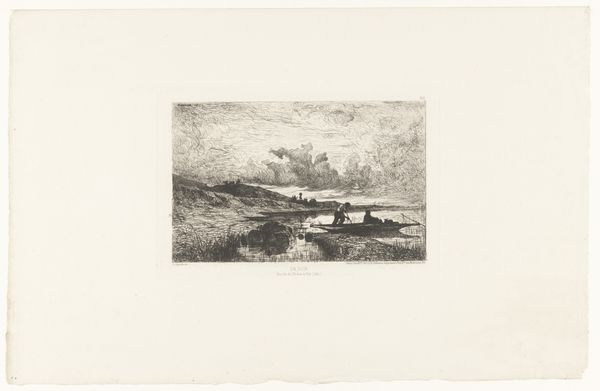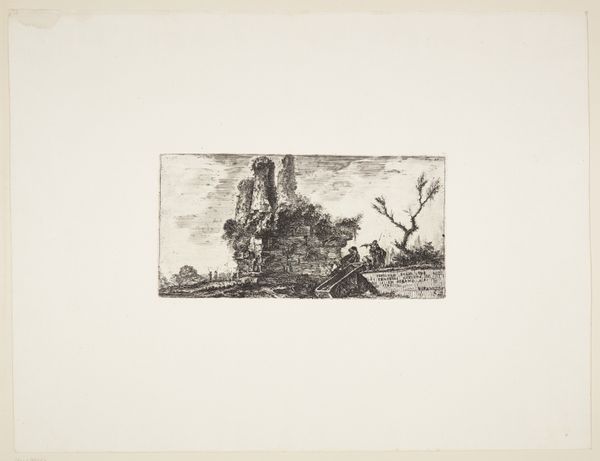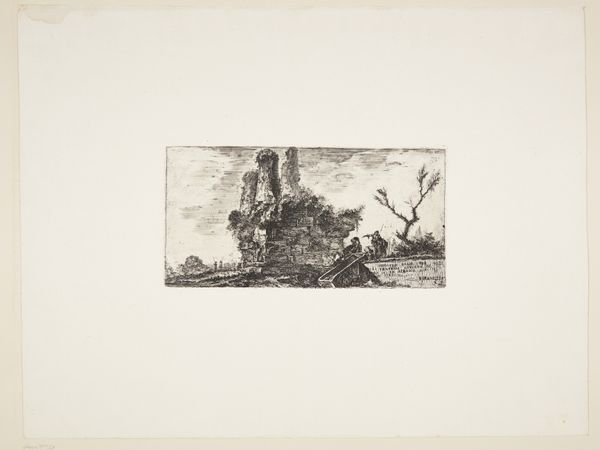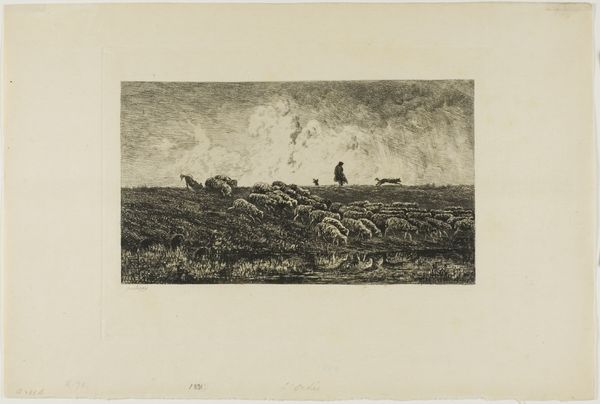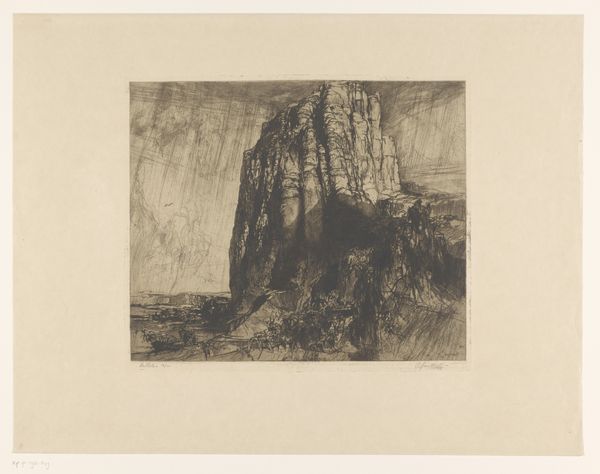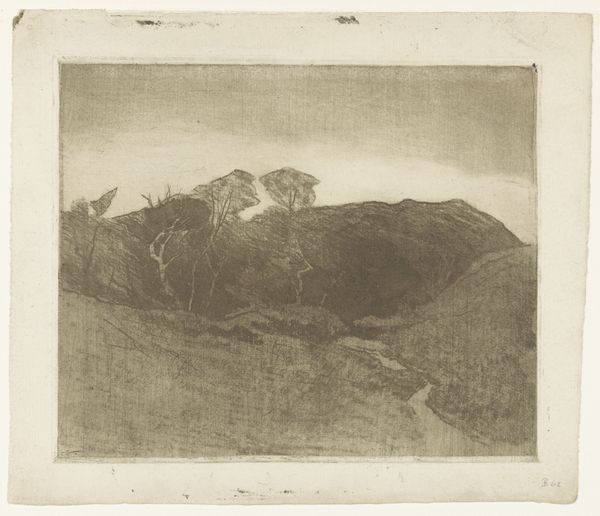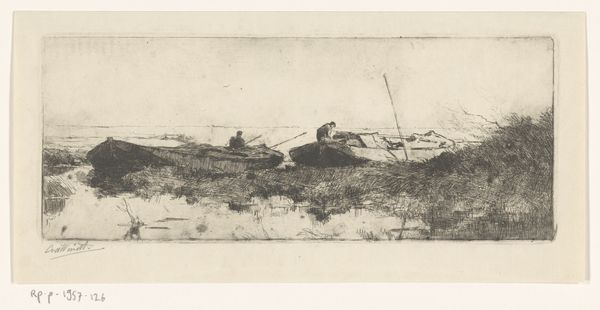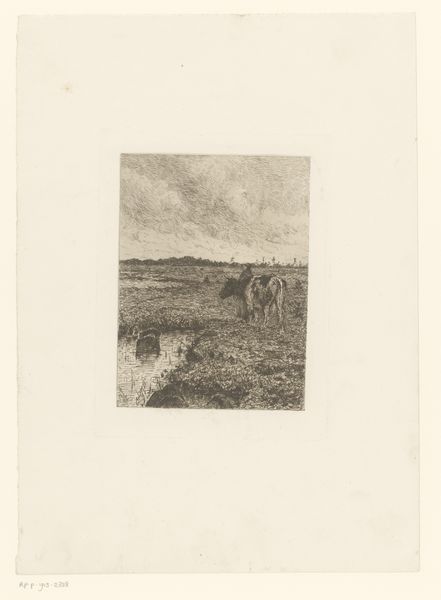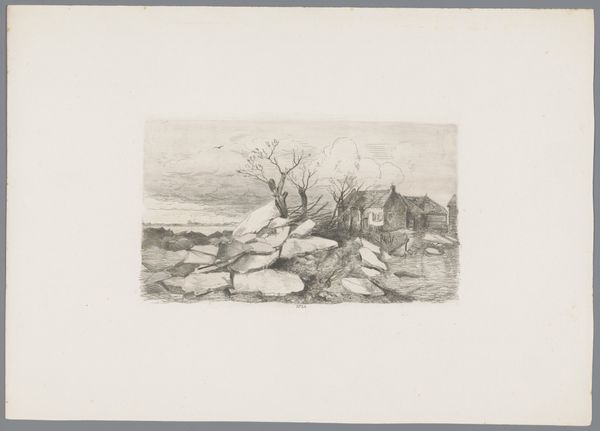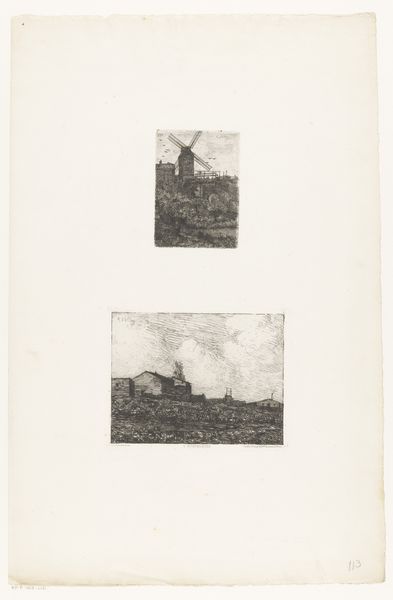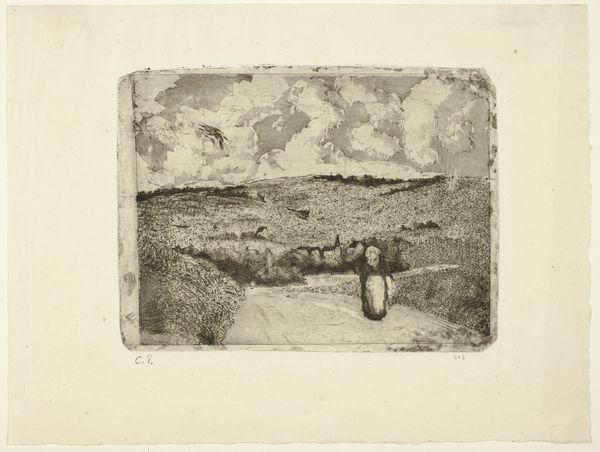
drawing, print, etching, paper
#
drawing
# print
#
etching
#
landscape
#
etching
#
paper
#
realism
Dimensions: 177 × 329 mm (image/plate); 365 × 495 mm (sheet)
Copyright: Public Domain
Curator: This is Giovanni Fattori's "Holy Cow," an etching created after 1887, and it is currently held at The Art Institute of Chicago. Editor: Its somber tonality makes quite the first impression. There's a certain weight, a gravity suggested by the sharp, closely placed lines that create texture in this relatively small-scale image. Curator: Precisely. The composition, you'll note, favors the lower register. A single bovine dominates the foreground, sharply contrasted against a wide and wild landscape stretching into the distance, capped with dark mountains against a seemingly desolate sky. Editor: Yes, I notice how the perspective gives dominance to nature and reduces the role, and perhaps the value, of labouring animals in the face of broader economic and agricultural shifts across late 19th-century Europe. Consider the implications within Italy's own socio-political upheavals at this time. Curator: That resonates when looking closely at the work's technique. Fattori's precise etching suggests a commitment to Realism—a kind of unflinching depiction. He gives primacy to the stark contrast between the light and shadow. Observe the very fine and delicate details that denote shape, texture, and form in the dry grasses. Editor: The muted shades achieved by layering these lines, almost like ink washes, creates an image both aesthetically subtle yet culturally rich. But might not its bleakness be misinterpreted, if the sociohistorical background of such images remains unknown? Is it at all "holy", I wonder, or merely a portrayal of struggle? Curator: What the piece gains by acknowledging that past gives the visual experience additional meaning. Whether seen through purely visual or social constructs, the stark realities this small but compelling piece reflects on—mortality and rural endurance—leaves a striking and sustained resonance, doesn’t it? Editor: Absolutely, especially through a social framework that considers shifts in animal power and agricultural technologies, alongside the development of urban societies in Europe during this period. I am certain the cow's fate hangs heavy here, for certain.
Comments
No comments
Be the first to comment and join the conversation on the ultimate creative platform.
